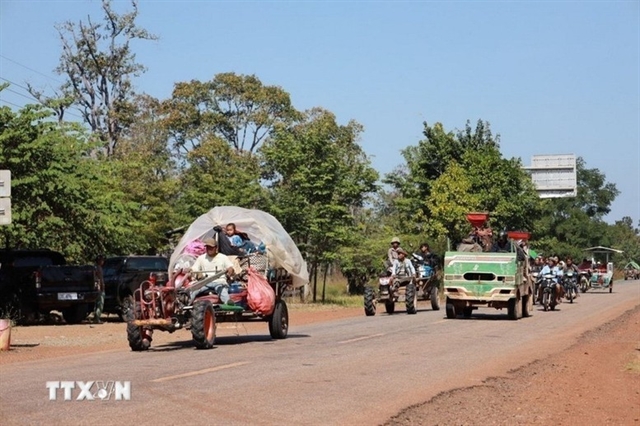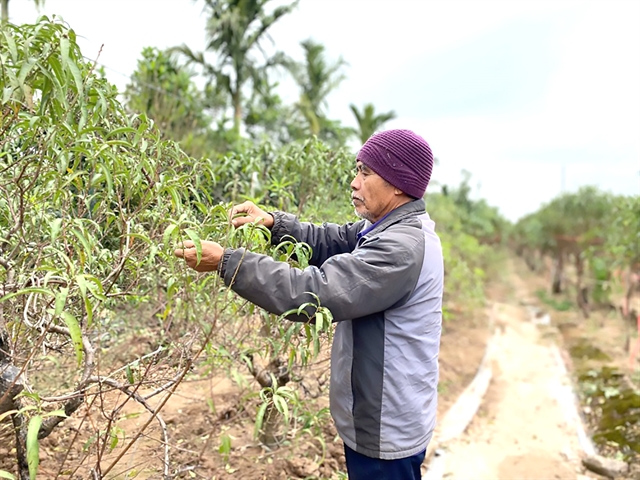 Society
Society
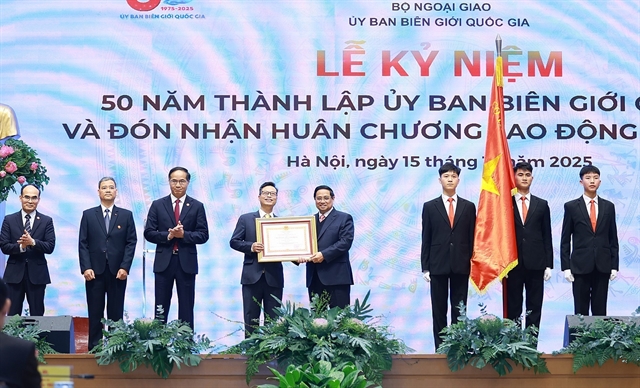
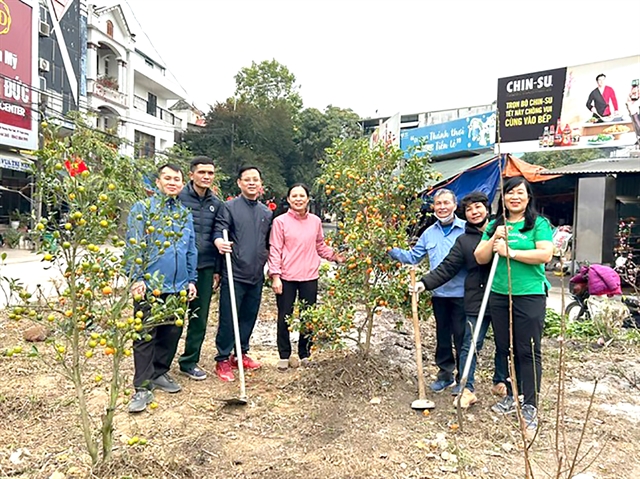 |
| Many people across the country are earger with replanting ornamental trees after Tết. — Photo tienphong.vn |
HÀ NỘI — Tết has passed, but its echoes still linger in unopened boxes of sweets and peach and kumquat trees left on the side of pavements. Instead of letting them become waste, many individuals and organisations have repurposed the gifts and trees to turn them back into items of value.
Sweets are being delivered to children in the highlands and peach and kumquat trees are replanted to beautify village roads and streets.
Candy 'banks'
While many families have to deal with refrigerators full of candies and food after Tết, some charity organisations have used them to bring joy to poor children.
One of the typical initiatives is Tết Donation, an annual event held after the Lunar New Year holiday by the Hà Nội Food Rescue Team, which was established in 2012 and now has widespread support. The main activity of Tết Donation is to give leftover candies, packaged foods, clothes and books that are still intact and of high quality after the holidays.
After being carefully checked, these items will be repackaged and delivered to poor people not only across Hà Nội but also to more remote areas.
“With Tết Donation, we want to bring a late Tết to the disadvantaged across the country. This activity not only helps surplus candies reach those in need, but also reduces food waste,” said Đào Khánh Chi, a member of Hà Nội Food Rescue.
This Tết holiday, the group brought five tonnes of gifts to the Pù Bin Kindergarten and Primary School in Mai Châu Town, Hoà Bình northern province.
Tết Donation announced that it would accept donations until the end of this month, with many drop off points located in most districts and towns in Hà Nội.
Nguyễn Thị Hồng Minh, an expert in food management and sustainable development, said that the use of surplus confectionery after Tết could be implemented in a more professional way, instead of just stopping at small-scale campaigns.
“In some countries, charitable organisations are very effective systems for collecting and distributing surplus food, creating community support systems worth learning from,” she said.
For example, the Global FoodBanking Network (GFN) specialises in cooperating with companies in the supply chain to recover safe, healthy food that would otherwise be discarded.
GFN member food banks then distribute it to community organisations to support people facing food insecurity.
Another example, Le Chainon Manquant in France, within the framework of the Paris 2024 Olympic Games, collected about nine tonnes of unused food from competition venues including sandwiches, salads and fruits, contributing to reducing waste and supporting needy communities.
“We can absolutely learn from this model, setting up fixed collection points so that candies and packaged foods can be delivered to necessary places quickly and hygienically," said Minh.
“If there is coordination between local authorities, charitable organisations and food businesses, we can expand this activity, helping tonnes of candy after Tết not go to waste,” she said.
Peach and kumquat revival
Not only food, every year hundreds of thousands of peach and kumquat trees are thrown away after the 15th day of the first lunar month.
This is not only wasteful, but also puts great pressure on the waste treatment system.
Realising this situation, many organisations and volunteer groups have called on people to donate unused ornamental trees to replant and green village roads and alleys.
In Chương Dương Commune in Thường Tín District, Hà Nội, the commune's Youth Union launched a programme to collect ornamental trees after Tết to plant in public areas.
Secretary of the commune's Youth Union Văn Đình Tưởng said: "After each Tết holiday, many trees are often thrown away, while some public areas in the area are lacking trees. In order not to waste ornamental kumquat trees, as well as to limit environmental pollution caused by tree disposal, we wrote a letter calling on people to donate the trees, which can be used to create a landscape and green vacant lots."
In Hương Sơn Commune in Mỹ Đức District, Hà Nội, the volunteer group Reviving Tết Trees collected peach and kumquat trees from households to replant on the road leading to the Hương Pagoda.
Trịnh Thị Vinh, the group leader, said: “After the first and second days of Tết holiday, peach and kumquat trees become trash, thrown away everywhere. Instead of letting them die, we ask for trees to replant, continuing a new life cycle.”
In addition to spontaneous activities, some localities have systematic plans to reuse ornamental plants after Tết.
The Tuyên Quang Province Farmers’ Association called for people to donate peach and kumquat trees to replant in public areas, saving resources and protecting the environment as well.
In Đà Nẵng, the Sơn Trà District People's Committee has coordinated with the Youth Union to launch a programme to donate kumquat trees and green the walking gardens.
A leader of the district said that after completing the task of decorating for Tết, these kumquat trees would, instead of being thrown away, be planted in parks and walking gardens to bring long-term value to the community.
Nguyễn Văn Duy, a member of the Youth Union in Tân Phúc Commune, Nông Cống District, the central province of Thanh Hoá, said: “Since 2020, we have started collecting peach and kumquat trees after Tết to plant on main roads and public grounds. At first, many people doubted whether the trees would survive, but in reality, after one or two years of care, many trees have grown green leaves, some even blooming brilliantly. Currently, we have nearly 100 peach and kumquat trees successfully planted.”
Expansion
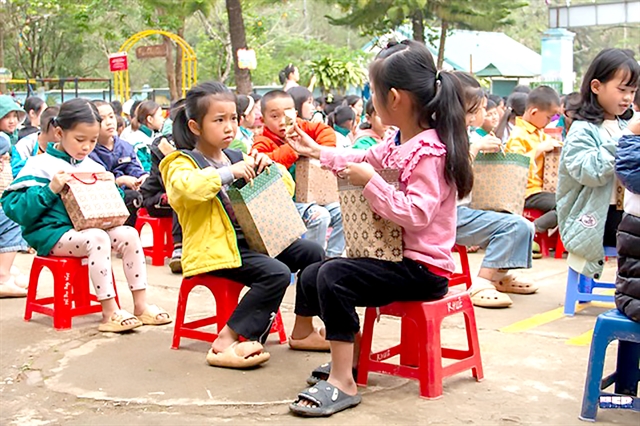 |
| Candies, books and toys are delivered to poor children by the Hà Nội Food Rescue group. — Photo tienphong.vn |
Statistics from the Global Food Bank Network show that in Việt Nam, the food waste index ranks second in the region, with more than eight million tonnes of food wasted each year, causing a loss of about US$3.9 billion, equivalent to two per cent of gross domestic product (GDP).
Nguyễn Thị Thu Hằng, an expert from the Institute for Environmental Research and Sustainable Development, believes that reusing items after Tết is a trend worth encouraging.
“Reusing food and ornamental plants not only helps save resources but is also a way for each person to show responsibility for the environment. If local areas have support policies and launch a widespread programme, the amount of discarded items after Tết will certainly decrease significantly,” she said.
In addition to recycling ornamental plants, Hằng added that there was a youth project in Cần Giờ District in HCM City that was also proving popular.
The group did not ask for large ornamental plants but only prioritised small flower pots such as chrysanthemums, gerberas and lavender. Normally, people buy plants to display during Tết, but because they do not know how to take care of them, the plants only have a life cycle of between seven to ten days and then the pots are then thrown straight into the garbage.
The volunteer group asked for the pots to grow seedlings, while the soil was dried, sprinkled with lime powder and mixed with a little substrate to become nutrients for the plants. Flowers and leaves were also chopped up to create mulch to fertilise other plants.
“The special thing about this initiative is that it not only saves trees but also regenerates the entire growing ecosystem. I think it can be expanded further by working with nurseries or urban agricultural farms, which can receive recycled soil and substrate, thereby creating a closed reuse system,” said Hằng.
"If this model is replicated, especially in large cities like HCM City and Hà Nội, where the amount of flowers displayed after Tết is extremely large, it will certainly help significantly reduce the amount of organic waste released into the environment," she added. — VNS



